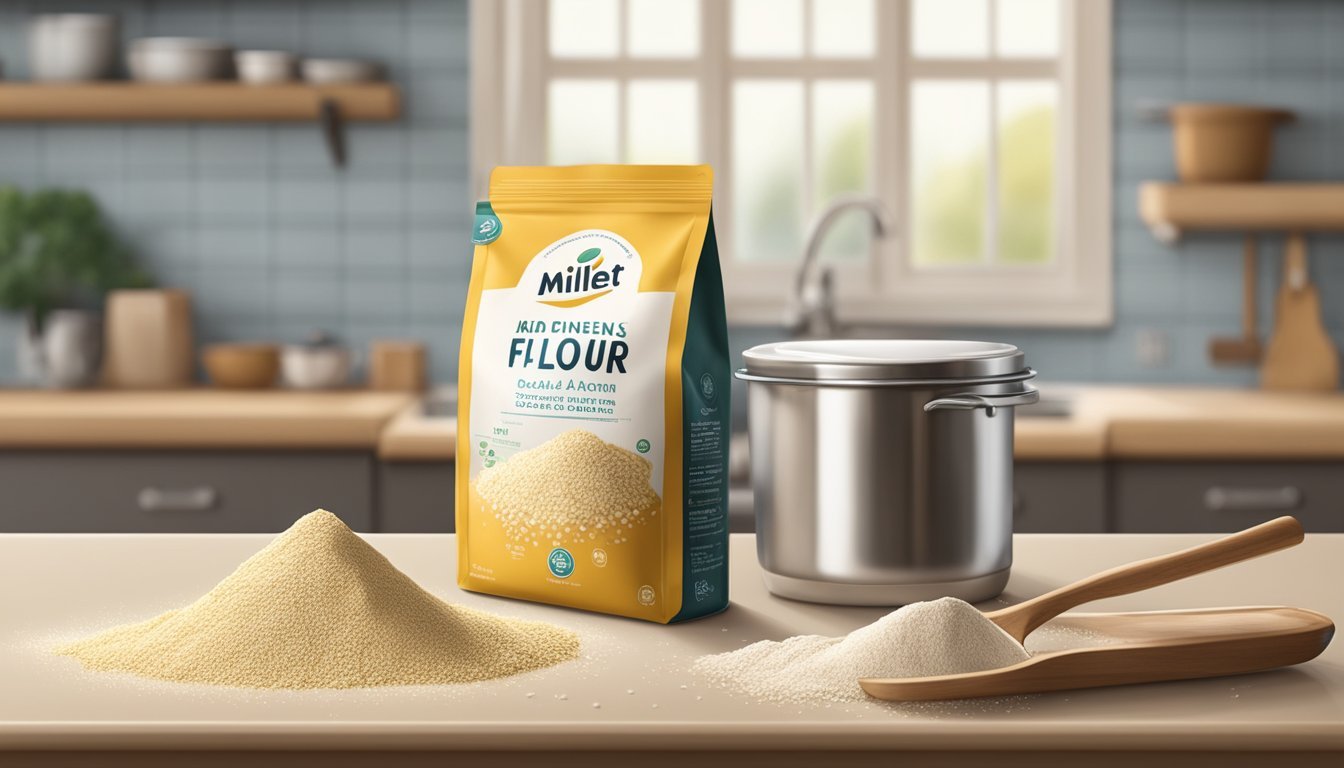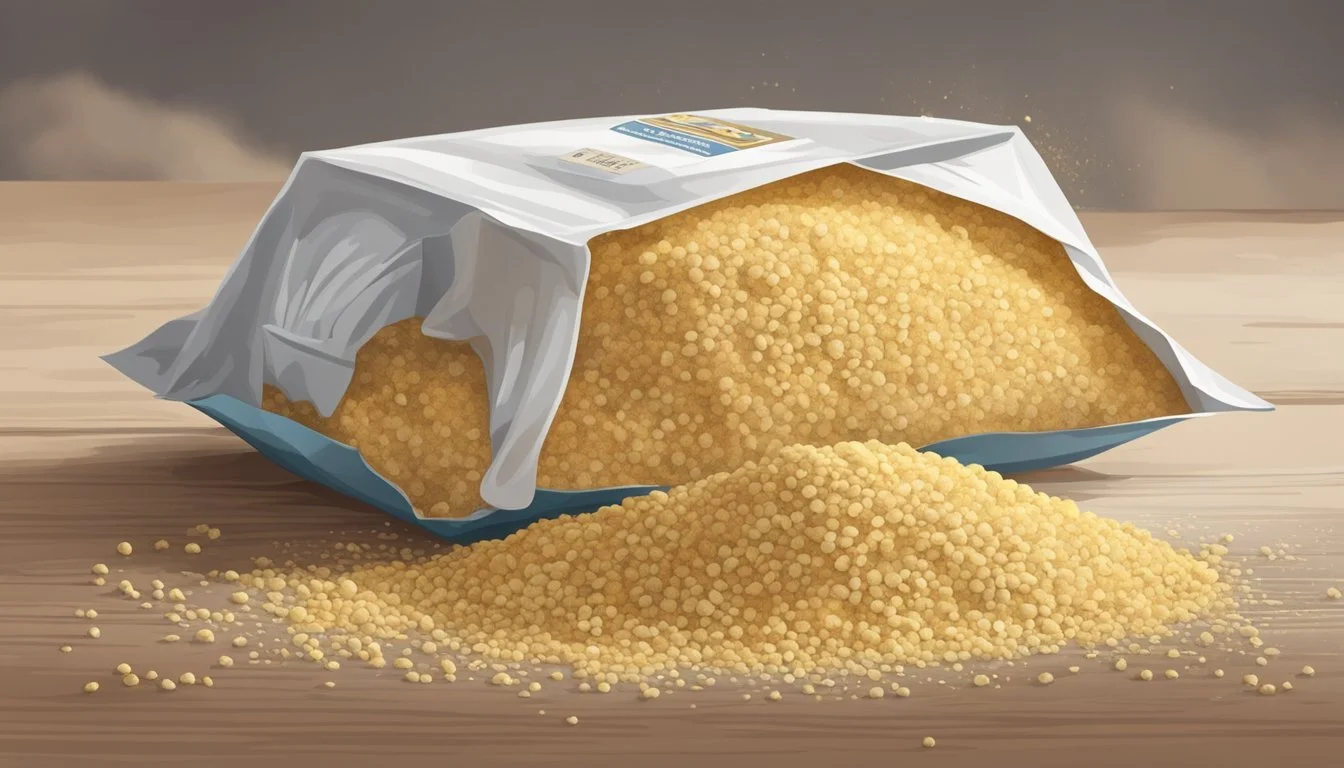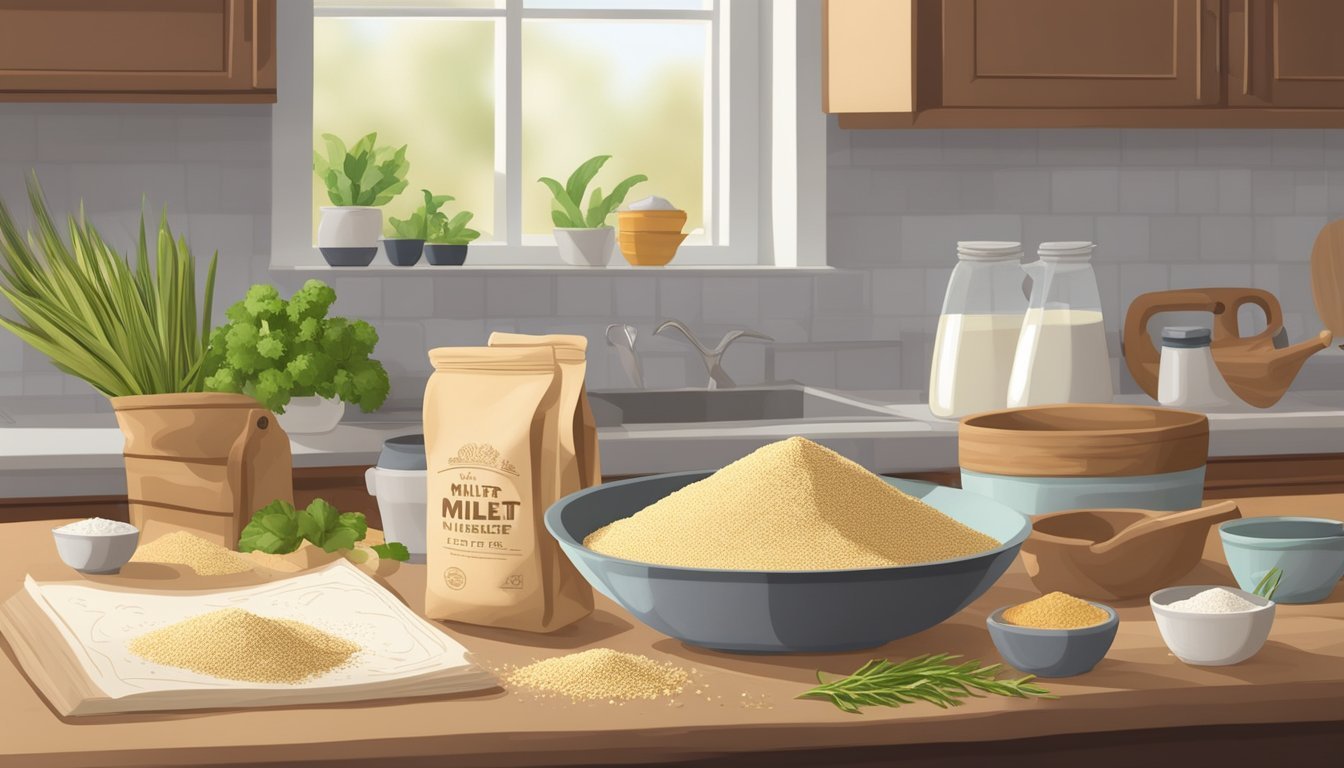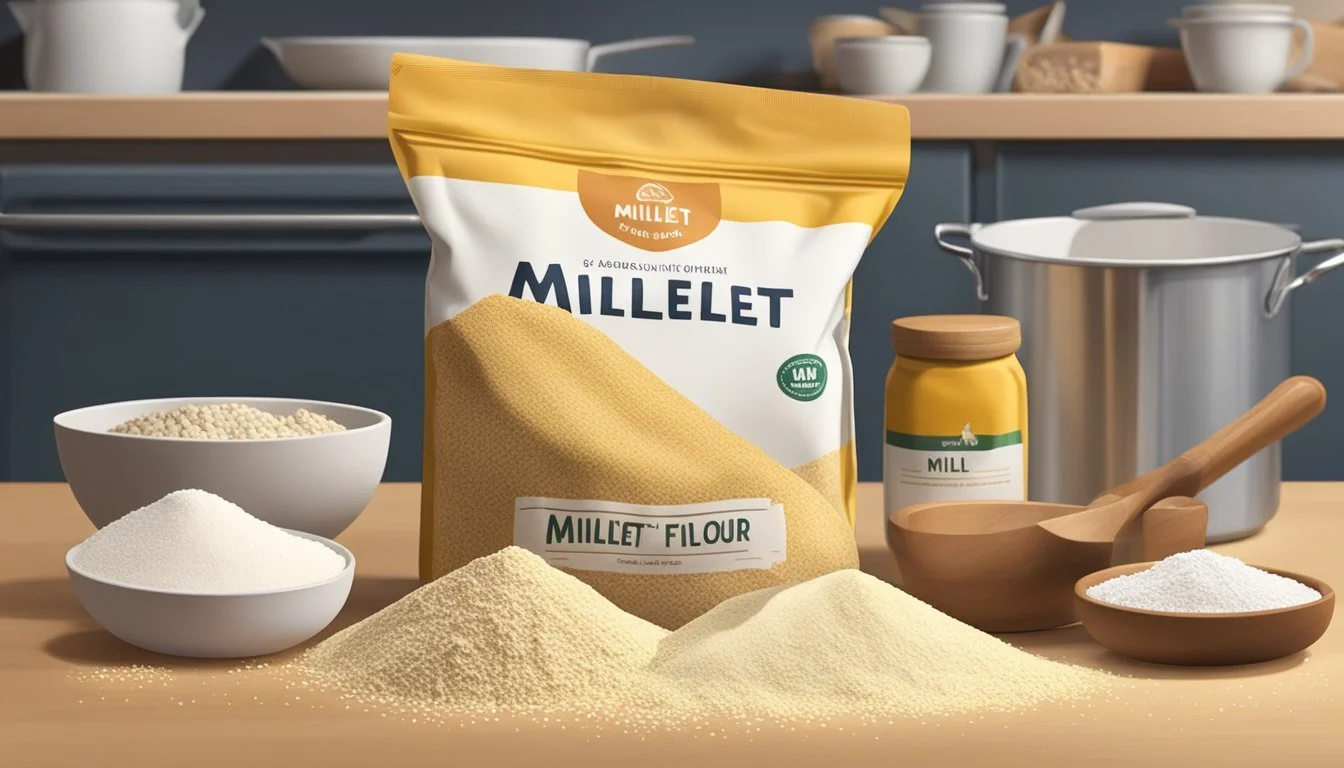Does Millet Flour Go Bad?
Shelf Life and Storage Tips Explained
Millet flour is a versatile ingredient commonly used in gluten-free baking and cooking. Like other flours, it is important to know whether it can spoil or go bad over time. Millet flour can indeed go bad, with spoilage evidenced by changes in texture, scent, and taste.
Proper storage extends its shelf life significantly. Unopened, it can remain fresh for up to two years if kept in an airtight container away from heat and light. Upon opening, regular checks for off odors or bitter tastes can help determine its edibility.
Knowing these storage tips and signs of spoilage ensures that millet flour retains its nutritional quality and flavor, making your culinary creations safe and enjoyable.
Understanding Millet Flour
Millet flour, derived from ancient grain millet, is renowned for being gluten-free, making it an excellent choice for those with celiac disease or a gluten intolerance.
This whole grain flour boasts a high nutritional value, including significant amounts of protein and fiber. These elements contribute to better digestive health.
Rich in magnesium, millet flour supports muscle function and bone health.
Millet flour is also packed with vitamins and minerals such as B vitamins, which aid in energy production, and iron, crucial for carrying oxygen in the blood.
It contains antioxidants that protect the body from oxidative stress and inflammation.
Incorporating millet flour into the diet can add nutritional diversity while supporting digestive and overall health.
Shelf Life of Millet Flour
Millet flour, a gluten-free alternative to traditional wheat flour, has a shorter shelf life compared to other flours.
Typically, millet flour can last between 2 to 6 months. This period can be affected by factors such as storage conditions and packaging.
Storage Conditions are crucial to extending the shelf life. Millet flour should be stored in an airtight container, in a cool, dry place. Refrigeration or freezing can significantly extend its shelf life.
Storage Method Shelf Life Room Temperature 2-3 months Refrigerated 4-6 months Frozen Up to 1 year
It's important to note that expiration dates and best-by dates are not the same. While expiration dates indicate safety, best-by dates suggest when the product is at its peak quality.
Quality Checks are essential for determining if millet flour has gone bad. Signs include a rancid odor, discoloration, or unusual taste. Using fresh millet flour not only ensures the best flavor but also maintains the nutritional benefits.
Regularly checking the storage conditions and adhering to recommended storage practices can help maintain the quality and extend the shelf life of millet flour.
Signs of Spoilage
Millet flour, like other flours, can go bad over time. Recognizing the signs of spoilage is crucial to ensure safe consumption.
Texture: If the flour has clumped together or feels unusually hard or lumpy, it may indicate the presence of moisture and potential spoilage. Good flour should be smooth and powdery.
Color: Fresh millet flour typically has a pale yellow to creamy color. Any significant discoloration, such as a gray or darker hue, is a likely sign that the flour is no longer suitable for use.
Smell: Millet flour should have a neutral or slightly nutty smell. A rancid, sour, or musty odor is a clear indication that the flour has gone bad. This off-putting smell is often a result of oil oxidation in the flour.
Mold: Visible mold growth in the form of green, black, or white spots on the flour is a definite sign of fungal contamination. Moldy flour should be discarded immediately.
Bacteria and Pests: Evidence of pests like insects or larvae within the flour is an obvious sign of spoilage. Additionally, clumps that form due to bacterial contamination can signal that the flour is unsafe to use.
Regularly check these signs to ensure your millet flour remains fresh and safe for consumption. Store it in airtight containers away from moisture and heat to extend its shelf life.
Proper Storage Methods
Millet flour can stay fresh and nutritious for extended periods if stored correctly. The three primary storage methods are keeping it in the pantry, refrigerator, or freezer, with each method having specific requirements to ensure the best preservation.
In the Pantry
Storing millet flour in the pantry requires certain conditions to maximize its shelf life. Use airtight containers to prevent moisture from entering and to keep pests out. These containers should be placed in a cool, dry place, away from direct sunlight and heat sources.
The ideal pantry location is one that maintains a stable temperature and low humidity. Dark places like a cupboard are perfect as they reduce light exposure, which can degrade the flour's quality. Typically, unopened millet flour can last up to six months in these conditions, while opened flour should be used within 1-3 months.
In the Refrigerator
Using the refrigerator can extend millet flour's freshness beyond pantry storage. Place the flour in airtight containers to prevent the absorption of moisture and odors from other foods. The cooler temperatures slow down the degradation process and inhibit the growth of pests and microorganisms.
For best results, ensure that the flour is kept in the main compartment of the refrigerator, where the temperature is most consistent. Refrigerated millet flour can remain good for 6-12 months, provided the containers are properly sealed. Regularly check for any signs of spoilage, such as changes in smell or texture, to ensure it remains safe to use.
In the Freezer
Freezing millet flour offers the longest shelf life and is an effective way to retain its nutritional value. Use airtight containers or freezer bags to protect the flour from freezer burn and moisture. Squeeze out any excess air before sealing the containers to create a tight seal.
Store the containers in a freezer set at 0°F (-18°C) or lower. Clearly label the containers with the date of storage to keep track. Frozen millet flour can be stored safely for up to a year or longer. When ready to use, allow the flour to thaw at room temperature before opening the container to avoid condensation from forming inside.
Millet Flour in Baking
Millet flour is a popular choice for gluten-free baking, providing a versatile and nutritious option for a variety of recipes.
In baking, millet flour can be used to make bread, cakes, muffins, and even cookies. It serves as an excellent substitute for wheat flour, especially for those with gluten intolerance. Its light texture and mild, slightly nutty flavor enhance the taste and texture of baked goods.
When using millet flour, it's often beneficial to combine it with other gluten-free starches. A recommended ratio is:
2 cups millet flour
1/2 cup tapioca starch
1/2 cup potato starch
Xanthan gum for better binding
This combination helps achieve a consistency closer to traditional flour, which is crucial for recipes like bread and cakes.
Freshness of millet flour is important. Fresh flour has a neutral, slightly nutty scent. Store it in an airtight container to preserve its flavor and nutritional value. Always check for changes in texture or odor, which may indicate spoilage.
Millet flour's nutritional profile is beneficial, offering a good source of protein, fiber, and essential minerals. It adds nutrition to baked goods without compromising on taste or texture.
To bake with millet flour, air-dry the grains thoroughly before grinding them into a fine powder using a high-powered blender. Scraping down the blender often ensures a smooth consistency. This homemade flour can then be used immediately in various recipes, from simple muffins to elaborate cakes.
Substituting Millet Flour
When millet flour is unavailable or if you seek an ingredient catering to dietary needs like gluten intolerance or celiac disease, several substitutes can be considered.
Oat Flour: Oat flour is a popular substitute due to its neutral taste and similar texture to millet flour. It works well in baked goods. Ensure you use gluten-free oats if needed.
Sorghum Flour: Sorghum flour, another whole grain flour, offers a slightly nutty and toasty flavor. It is rich in nutrients similar to millet flour.
Quinoa Flour: Quinoa flour can be used as a direct 1:1 substitute. It might require the addition of an egg or egg replacer to improve texture.
Almond Flour: Made from ground almonds, almond flour is gluten-free and low in carbs, making it a good choice for keto diets. Use ⅓ cup of almond flour for every cup of millet flour.
Rice Flour: Rice flour, particularly in combination with other gluten-free flours, provides a light texture, suitable for baked goods.
All-Purpose Flour: If gluten is not a concern, all-purpose flour can be used. It does not offer the same nutritional profile as whole grain flours.
Alternatives for Specific Uses
Pasta Substitutes: Almond flour works well for homemade pasta.
Crispy Coating: Rice flour, used alone or with other flours, gives a light, crispy coating for fried foods.
Cakes and Muffins: Mix sorghum flour with other gluten-free flours to maintain texture and flavor.
A comparison table of substitutes and their uses:
Substitute Best Used For Gluten-Free Oat Flour Baked goods Yes Sorghum Flour Multifunctional Yes Quinoa Flour Baked goods Yes Almond Flour Keto recipes, pasta Yes Rice Flour Light and crispy coatings Yes All-Purpose Flour General baking and cooking No
Using these substitutes ensures that the dietary preferences and specific needs of all can be easily met.
Comparing Millet Flour with Other Flours
Millet flour stands out for its nutritional value, versatility in recipes, and being gluten-free. This section will compare millet flour with other common flours in terms of nutrition, culinary uses, and shelf life.
Nutritional Differences
Millet flour is rich in nutrients such as iron, magnesium, and B vitamins. Per 100 grams, it provides:
Iron: 22% of the Daily Value (DV)
Magnesium
Phosphorus
Fiber
In contrast, all-purpose flour offers fewer nutrients but is lower in calories, carbs, and fat. It lacks significant amounts of minerals and vitamins found in millet flour except in fortified versions. While both flours contain protein, millet flour's higher nutritional profile makes it a better choice for health-focused diets.
Culinary Uses
Millet flour's gluten-free nature makes it suitable for those with gluten intolerance. Its mild, slightly nutty taste works well in a variety of baked goods, such as cookies, cakes, and bread.
All-purpose flour, however, binds ingredients together due to its gluten content, giving baked products their structure. Consequently, millet flour is often used in combination with other flours to achieve the desired texture and consistency in recipes.
Shelf Life Comparison
Shelf life varies between millet flour and other common flours. Millet flour, being a whole grain, is more prone to becoming rancid due to its oil content. Proper storage in airtight containers and refrigeration can extend its shelf life to about 3 to 6 months.
All-purpose flour typically lasts longer, around 6 to 8 months when stored in a cool, dry place. Whole grain flours generally have a shorter shelf life compared to refined flours due to the higher oil content in the grains.
Health Benefits of Millet Flour
Millet flour offers various health benefits, making it a valuable addition to a balanced diet.
Nutritional Value: This flour is packed with essential nutrients. 100 grams of millet flour provides roughly 22% of the Daily Value for iron and B vitamins. It also contains other vital minerals such as magnesium, manganese, phosphorus, copper, zinc, and potassium.
Gluten-Free: Millet flour is naturally gluten-free, making it an excellent choice for individuals with celiac disease or those avoiding gluten for other health reasons.
Fiber: Millet flour is rich in dietary fiber. High fiber content aids in digestion, prevents constipation, and helps regulate blood sugar levels. This makes it beneficial for those managing diabetes.
Protein: Although not as high in protein as some other grains, millet flour still contributes to daily protein intake. Combined with other protein sources, it supports muscle repair and overall growth.
Digestive Health: The fiber in millet flour promotes good digestive health by facilitating regular bowel movements and maintaining a healthy gut microbiome.
Magnesium: Magnesium is essential for numerous biological functions, including muscle and nerve function, blood sugar control, and blood pressure regulation. Millet flour can help boost magnesium intake.
Antioxidants: Millet flour contains antioxidants that combat oxidative stress and may lower the risk of chronic diseases. Antioxidants in the diet are crucial for maintaining overall health and preventing cell damage.
Whole Grain: As a whole grain, millet flour retains the bran, germ, and endosperm, making it more nutritious than refined flours. Whole grains are linked to a reduced risk of heart disease, stroke, and certain cancers.
Millet flour's diverse benefits make it an excellent option for enhancing nutritional quality in meals.
Creative Uses for Millet Flour
Millet flour is highly versatile and suitable for various culinary applications. It can replace a portion or all of the wheat flour in many recipes.
In bread making, millet flour is an excellent gluten-free alternative. It provides a unique texture that enhances the overall experience of gluten-free bread.
Baking enthusiasts can benefit from millet flour in their muffins, cookies, and pancakes. Adding it to muffin batter improves texture and brings a nutrient boost to the final product.
Cooks often use millet flour as a thickening agent in soups and stews. Its fine consistency ensures a smooth blend without altering the taste significantly.
Millet flour is a wonderful addition to porridge, providing a nutritious and warming breakfast option. Simply substituting a portion of regular flour with millet flour can enhance the meal's nutritional value.
During holidays, both sweet and savory dishes can benefit from millet flour. Savory ricotta chive biscuits and buttery lemon sheet cakes are examples of creative ways to incorporate millet flour into festive menus.
This flour can also serve as a partial substitute for cake flour in delicate recipes, giving a slightly nutty flavor and adding beneficial nutrients like iron and B vitamins.
Tables listing the nutritional benefits of millet flour per 100 grams can be helpful in demonstrating its value:
Nutrient Amount per 100g Iron 22% DV Magnesium - B Vitamins - Manganese - Phosphorus - Copper - Zinc - Potassium -








